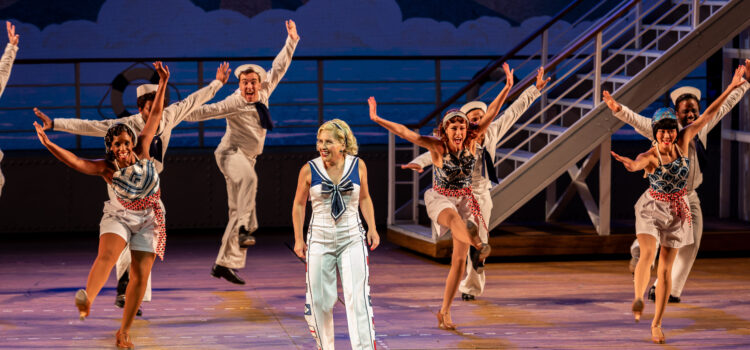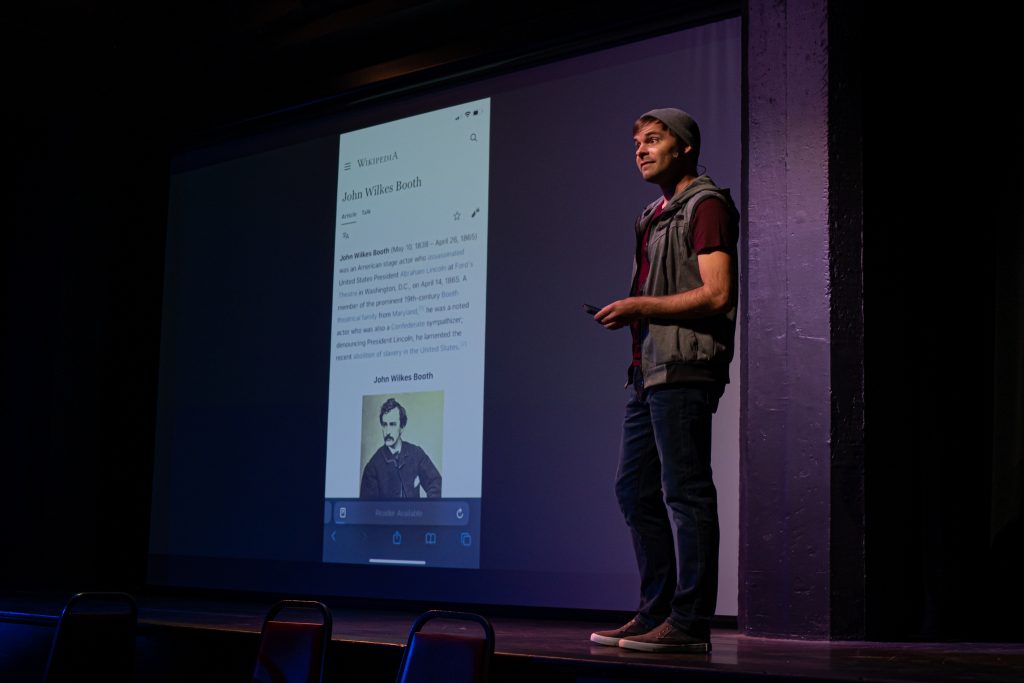By Lynn Venhaus
A glorious, glamorous, and grand gem of a good-time show, “Anything Goes” celebrates everything I love about musical theater – big splashy dance numbers, sophisticated songs, light-hearted comedy and dreamy romance.
And it’s everything Muny audiences have become fond of over the years, reminding us why this 106-year-old institution is a source of civic pride and family tradition in St. Louis.
With inspired choreography by Jared Grimes, sharp-witted direction by Marcia Milgrom Dodge, sumptuous musical direction by Ben Whiteley, and many shining standouts in a beguiling cast, its charms are limitless.
While Cole Porter’s beloved breezy romp has been a crowd-pleasing show five times before, since its local 1940 debut, this fresh interpretation is a spectacular introduction – or re-introduction – to one of the all-time greats of the American theatre.
It’s been 25 years since it was here. “You’re the Top,” “Friendship” and “I Get a Kick Out of You” remind us of Porter’s legendary wit and cultural impact. And that showstopping title song that closes out Act One? That’s the pinnacle every creator strives for, and Muny magic made Grimes’ vision happen with lots of happy feet and sweat equity. Kudos to sound designers John Shivers and David Patridge for the rat-a-tats and more.
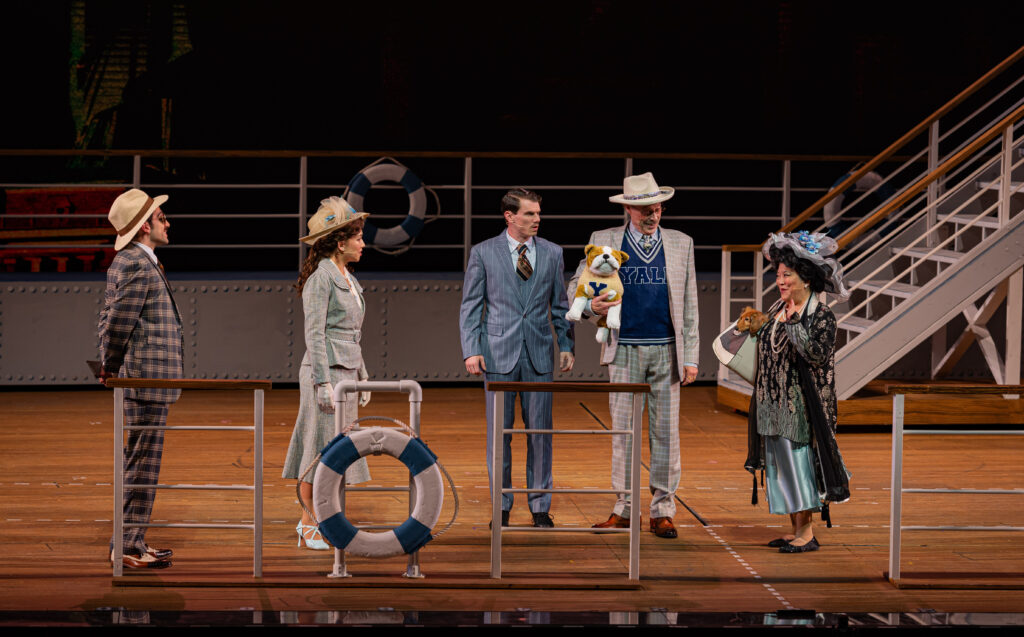
Simply put, the laugh-out-loud experience made people happy – smiles abounded, and a spring was in our step as we exited for the last time this summer of 2024. Talk about a jovial way to chase the blues away!
Not only did the weather provide a beautiful night for the season’s frisky finale, but even the super blue moon cooperated with a special moonglow. It was if we were all aboard the S.S. American, a luxury ocean liner bound for London, forgetting our troubles and being whisked away to a time of technicolor Hollywood musicals filmed on an MGM lot.
The escapist setting – as reinforced through stunning hues of azure, blue, aqua and turquoise – is 1934, post-Great Depression and post-Prohibition. It is also a period where headline-hogging criminals were treated as celebrities (Public Enemies!), and evangelists were also media darlings. Hence, some barbed social satire zingers.
The creative team’s impeccable attention to detail might be the most impressive takeaway of the evening. Each artisan’s handiwork is indelibly noted in the clever construction on every crevice of that expansive stage.

This classic’s vitality was showcased in everything from Rob Denton’s resplendent lighting design — a thunder-and-lightning storm! — to Tristan Raines’ luxe costume design, with innovative video designer Kylee Loera’s exquisite art deco nods meshing splendidly with award-winning Edward E. Haynes Jr.’s transporting scenic design.
An extraordinary ensemble broadly delivered high-seas hijinks with the zesty cheekiness of the Marx Brothers and the grace of Fred Astaire and Ginger Rogers, balancing lush vocals with peppy dance routines and snappy repartee. Grimes’ steps seemed to have an extra flair added to the choreography, which was striking in execution. Another special nod to production stage manager Kelsey Tippins for the show’s zippy flow.
The performers couldn’t be more endearing — as if you’re watching a marathon on Turner Classic Movies, only it exhilarates like only live theater can produce.
Credit is overdue for the casting choices by associate artistic director Michael Baxter, who worked closely with the Telsey office (Jimmy Larkin and Alex Cortinas), and artistic director and executive producer Mike Isaacson, because these are noteworthy smart decisions, everyone well-suited for the roles from chorus to principals.
The refurbished book by Timothy Crouse and John Weidman keeps the wacky framework first established by P.G. Wodehouse and Guy Bolton in 1934 and revised by Howard Lindsay and Russel Crouse in 1962 but erases problematic cultural stereotypes without missing a beat.
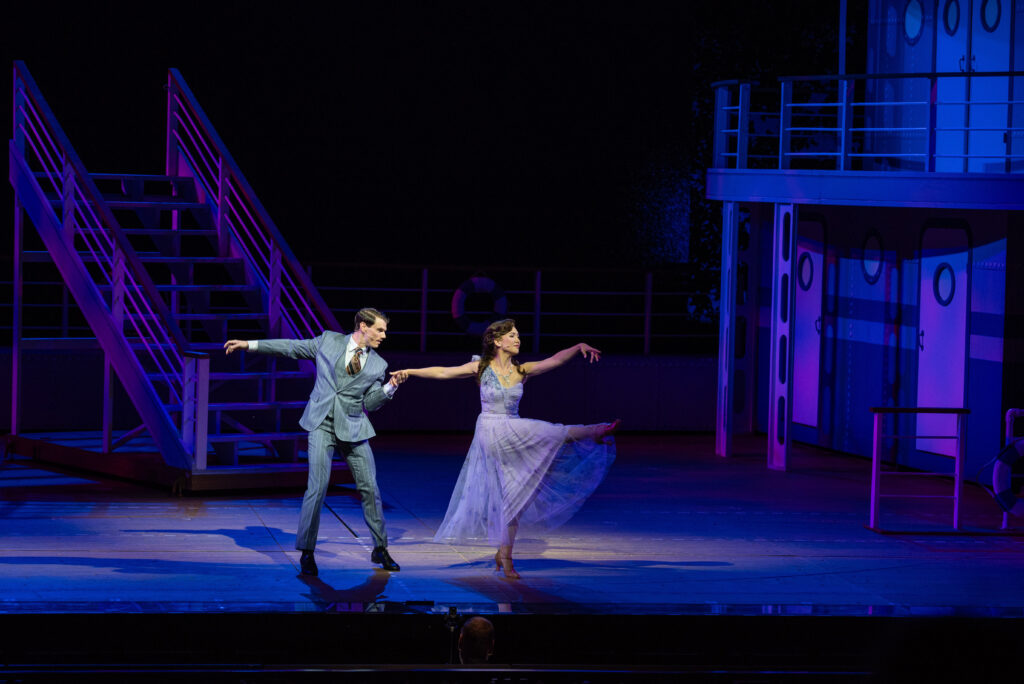
Timothy Crouse, an American journalist and writer, wrote the new book that was used in the acclaimed 1987 (Patti LuPone) and 2011 (Sutton Foster) revivals that both won Tony Awards. The Muny is using his 1987 Lincoln Center version. He is the son of playwright Russel Crouse.
Dodge, who imbued a vintage vibe like mashing up “A Night at the Opera,’ “Duck Soup” and “The Court Jester,” leaned into the comic chaos of mistaken identities and pesky entanglements. The performers obliged with quick-witted quips, silly slapstick and actual belly laughs. (Hilarity ensued with Moonface Martin and a missing dog “Cheeky” – you just must see it.)
Newcomer Kevin Chamberlin’s Moonface impressed mightily as his considerable comic gifts became apparent. A three-time Tony nominee, he has a long list of film and television credits, including as the butler Bertram on the Disney Channel’s sitcom “Jessie.”
He was a terrific scene partner for Adrianna Hicks, who sparkled as gun moll Erma. Making a vivacious debut, she was exuberant in her solo “Buddie, Beware.” Hicks played Sugar in “Some Like It Hot” and Aragon” in “Six” on Broadway.
Kimberly Immanuel personified sweet and conflicted Hope Harcourt, a debutante who has fallen for Billy Crocker, who is trying to be respectable working on Wall Street but is something of a rake. She’s an elegant dancer and polished in delivering ballads.
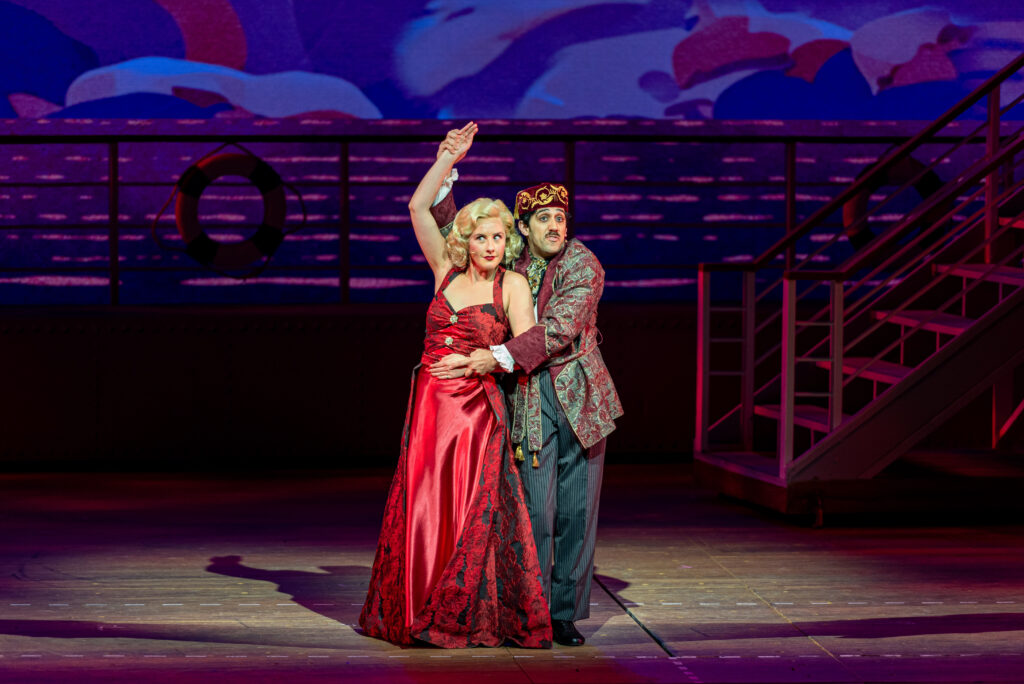
Immanuel paired beautifully with romantic hero Jay Armstrong Johnson, who has vividly brought to life iconic roles at the Muny like Jack Kelly in 2017’s “Newsies,” Barnaby Tucker in 2014’s “Hello, Dolly!” and Billy Lawlor in 2016’s “42nd Street.”
His accomplished dancing, singing and acting skills illustrated Billy Crocker’s personality well, not unlike what you expect in Gene Kelly.
Their “Easy to Love” and “All Through the Night” were wistful and touching, while “It’s De-Lovely” showed off a merry side.
While the talent has multiple triple threats, perhaps the performer making the most of his stage time was a delightful George Abud as Sir Evelyn Oakleigh, a stuffed shirt royal who quickly warms up to American customs. His befuddled but gallant Oakleigh is reminiscent of both Danny Kaye and British comic actor Terry Thomas.
Anchoring this crisp and snappy group was Jeanna de Waal as the saucy and cosmopolitan nightclub singer-evangelist Reno Sweeney. She could belt, she could swagger, she could wisecrack – and she could spellbind with dazzling tap-dancing moves.
Last seen in the title role of “Mary Poppins” here in 2022, she revealed new strengths. And looked mighty fine in designer Kelley Jordan’s stylish blonde wig and Raines’ glittery garb. She looked and moved like Carole Lombard.
Fan favorites Lara Teeter wildly exaggerated inebriated Ivy League businessman Elisha J. Whitney and Ann Harada was swift in feigning outrage and nimble physicality as the social climbing socialite Mrs. Evangeline Harcourt.

Eric Jordan Young, a dandy Cogsworth in last summer’s “Disney’s Beauty and the Beast,” was the ship’s captain, recalling Gavin MacLeod’s Captain Stubing on “The Love Boat.”
Kristen Grace Brown, Candace Hatakeyama, Bethany Ann Tesarck and Danielle Jackman strutted superbly as Reno’s Angels – Purity, Chastity, Charity and Virtue, as did Carina-Kay Louchiey as trumpet blower Gabriel.
As the lively scallywags Spit and Dippy, Spencer Jones and Joe Capstick were a memorable addition.
Portraying sailors and other roles were C.K. Edwards, Michael Harp, Colin Bradbury, John Manzari, Cole Newburg, Lamont Brown, Alaman Diadhiou, Ryan Lambert, and Alex Hayden Miller. Lauralyn McLelland was tasked with playing “Woman in Bathchair.”
“Anything Goes” is both the icing and the cherry on top of an outstanding Muny season that’s been marked by an overwhelming sense of joy and community in every musical this 106th season.
As everyone bid adieu in a bittersweet farewell, a rousing curtain call summed up what’s singular about the Muny: it’s a communal feeling that can’t be duplicated and only happens under the stars, right here in St. Louis.
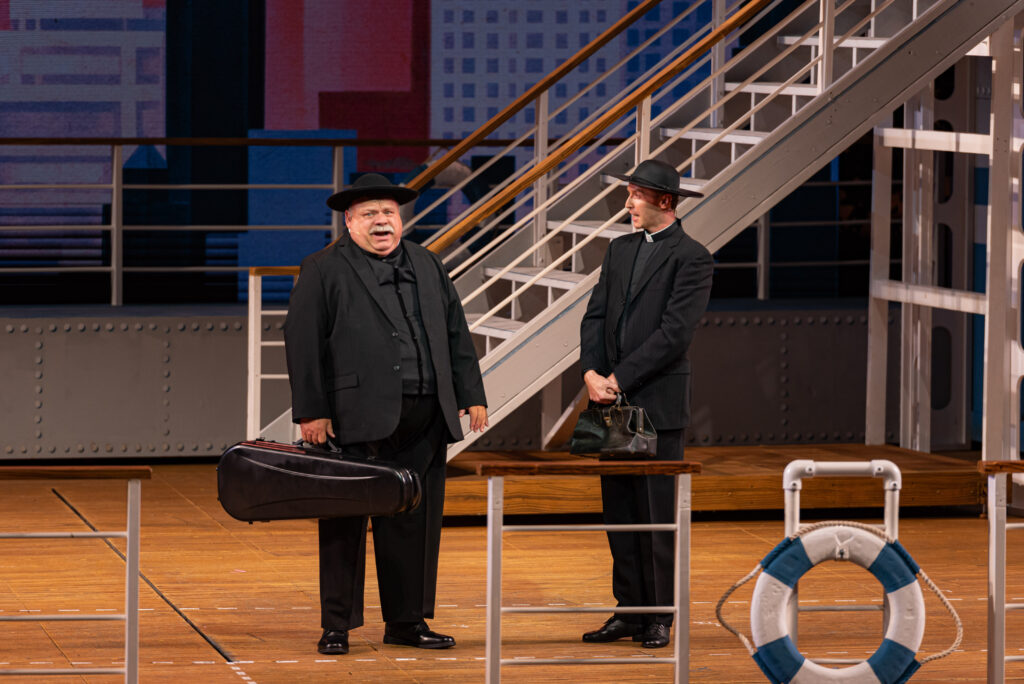
The Muny presents Cole Porter’s “Anything Goes” Aug. 19 – 25 at 8:15 p.m. nightly on the outdoor stage at Forest Park. For more information: muny.org.
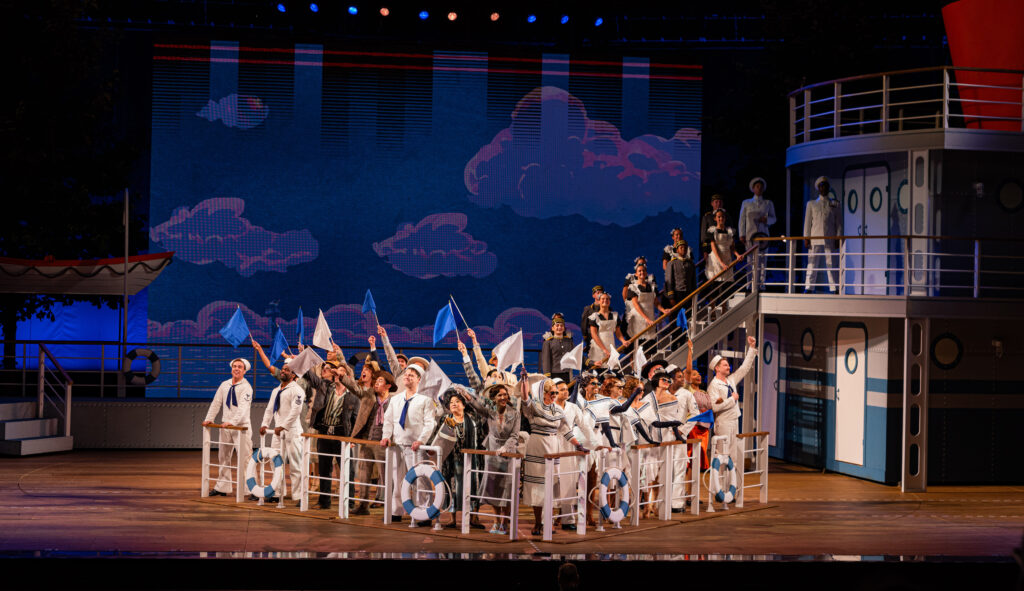

Lynn (Zipfel) Venhaus has had a continuous byline in St. Louis metro region publications since 1978. She writes features and news for Belleville News-Democrat and contributes to St. Louis magazine and other publications.
She is a Rotten Tomatoes-approved film critic, currently reviews films for Webster-Kirkwood Times and KTRS Radio, covers entertainment for PopLifeSTL.com and co-hosts podcast PopLifeSTL.com…Presents.
She is a member of Critics Choice Association, where she serves on the women’s and marketing committees; Alliance of Women Film Journalists; and on the board of the St. Louis Film Critics Association. She is a founding and board member of the St. Louis Theater Circle.
She is retired from teaching journalism/media as an adjunct college instructor.

